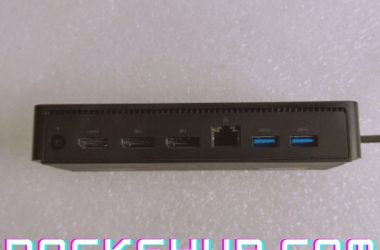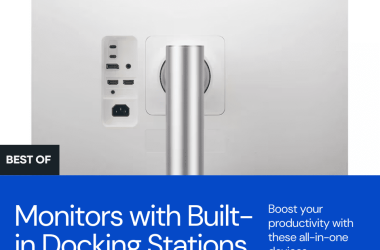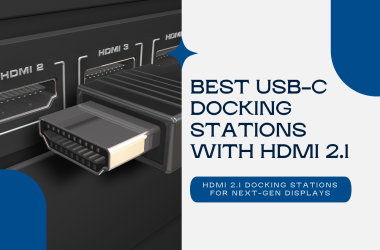Microsoft has taken a bold step forward with the Surface Laptop 7th Edition, a sleek, powerful device that proves the company’s ambition to compete directly with Apple’s MacBook Air. Sporting Qualcomm’s new Snapdragon X chips, longer battery life, and the promise of integrated AI capabilities, this Surface Laptop signals a significant reinvention of Microsoft’s clamshell lineup. But does it live up to the hype? After evaluating its performance, design, AI features, and usability, here’s what we found.
Design: A Premium, Modern Makeover
Microsoft has fine-tuned the Surface Laptop’s design to near perfection. The 13.8-inch and 15-inch models feature thin bezels, rounded corners, and an all-aluminum chassis, resulting in a premium, modern aesthetic. At 2.96 lbs for the 13.8-inch version and 3.67 lbs for the 15-inch, the Surface Laptop is impressively portable while retaining durability.
The display is another highlight. It’s a 2K-resolution LCD with a 3:2 aspect ratio, HDR support, and a buttery-smooth 120Hz refresh rate. Colors are vivid, text is sharp, and outdoor visibility is decent, although glare can be an issue without an anti-reflective coating. Compared to competitors offering OLED panels, this remains a minor oversight.
Microsoft also introduced a haptic precision trackpad for consistent click feedback across the surface. The experience is delightful—smooth, responsive, and customizable. Accompanying this is the addition of a dedicated Copilot AI key, the first major change to Windows keyboards in decades. While it offers a convenient shortcut to Microsoft’s AI assistant, its utility depends on your workflow and how much you rely on Copilot.
Ports are limited but sufficient: two USB-C ports (Thunderbolt 4), one USB-A port, a 3.5mm headphone jack, and the proprietary Surface Connect charging port. The 15-inch model adds a microSD card slot for additional flexibility. This setup is better than the MacBook Air’s minimal ports but still falls short for those who need extensive connectivity.
Design Rating: 4.5/5
Performance: Qualcomm Delivers, With Caveats
For the first time, Microsoft has ditched Intel in favor of Qualcomm’s Snapdragon X Elite and X Plus processors. This ARM-based hardware brings impressive efficiency and performance gains, finally delivering on Microsoft’s long-standing promise for Windows on ARM.
In everyday use, the Surface Laptop feels snappy and responsive. Apps like Chrome, Spotify, and Slack run seamlessly, and multitasking is a breeze. Benchmarks reveal it outpaces previous Surface models and even matches Apple’s M3 MacBook Air in multicore tasks. The Snapdragon X Elite excels at sustained workloads thanks to its fan-cooled design, which gives it a slight edge over the fanless MacBook Air.
However, there are limitations. Software optimized for ARM architecture runs beautifully, but emulated apps relying on Microsoft’s Prism emulator can exhibit performance hiccups or drain battery faster. For example, Adobe Premiere Pro remains unavailable natively, and some legacy apps like Google Drive refuse to install.
Gaming is also not the Surface Laptop’s strong suit. The integrated Adreno GPU struggles with graphically demanding titles, and Microsoft’s Auto SR upscaling feature still needs refinement. This laptop is ideal for productivity, not gaming or creative-heavy workflows.
Performance Rating: 4/5
Battery Life: A Workday Without Worry
Battery life is where the Surface Laptop truly shines. Thanks to the Snapdragon chip’s power efficiency, you can expect all-day use on a single charge. In real-world scenarios, the 13.8-inch model consistently delivered 10-15 hours of productivity with 50% brightness, even with multiple apps running.
Microsoft claims up to 20 hours of video playback, and in testing, a YouTube playback loop drained only 63% of the battery after 14 hours. This rivals and, in some cases, surpasses the battery life of Apple’s MacBook Air M3. Combined with fast charging that brings the battery to 80% in an hour, the Surface Laptop is a dependable travel companion.
Battery Life Rating: 5/5
AI Features: Not Ready for Prime Time
The Surface Laptop is one of the first Copilot+ PCs, designed to usher in a new era of AI-driven productivity. Unfortunately, these AI features feel half-baked at launch.
- Windows Studio Effects: Features like background blur and creative filters work well for video calls, but Eye Contact struggles to deliver a natural gaze.
- CoCreator: Integrated into Paint, this generative AI tool turns doodles into polished artwork. However, it’s inconsistent—prompts need to be vague, and the outputs often lack polish.
- Live Captions: Translating 44 languages in real time is impressive, but the feature sometimes lags behind dialog, making it less effective for live events.
- Recall: Microsoft’s most anticipated AI feature, Recall, has been delayed due to privacy concerns. It’s a potentially game-changing memory tool but remains absent for now.
While the AI tools demonstrate promise, they lack refinement and practicality for most users. Without Recall, the AI integration feels more like a gimmick than a necessity.
AI Features Rating: 3/5
Value for Money: A Premium Price
The Surface Laptop starts at $999.99 for the 13.8-inch model with the Snapdragon X Plus, 16GB of RAM, and 256GB of storage. The larger 15-inch model starts at $1,299.99 with the Snapdragon X Elite. Higher-end configurations can reach up to $2,400.
For a base model, Microsoft offers good value—16GB of RAM out of the gate is a standout feature compared to the MacBook Air’s 8GB. However, competitors like the Asus ZenBook 14 OLED offer similar performance and features for less money. If you’re willing to spend over $1,400, the MacBook Air M3 with its OLED-like display and proven performance might be a more compelling option.
Value Rating: 4/5
Final Verdict: A Strong Windows Contender
The Microsoft Surface Laptop 7th Edition is an excellent machine that delivers fast performance, stunning battery life, and premium design. For those entrenched in the Windows ecosystem, it’s arguably the best alternative to Apple’s MacBook Air. The transition to ARM has largely succeeded, and Microsoft’s partnership with Qualcomm shows promise.
However, the overhyped AI features remain underwhelming, and compatibility with some apps can still be a hurdle. If you need a reliable, portable laptop for everyday tasks, the Surface Laptop is a fantastic choice. But if AI tools or demanding creative work are central to your workflow, you might want to wait for future updates or consider alternatives.
Overall Rating: 4/5
Pros
- Excellent battery life
- Sleek, lightweight design
- Solid performance for productivity
- Haptic touchpad and improved webcam
- Competitive starting price
Cons
- Limited app compatibility (non-ARM apps)
- AI features lack polish
- No OLED display option
- Expensive at higher configurations





